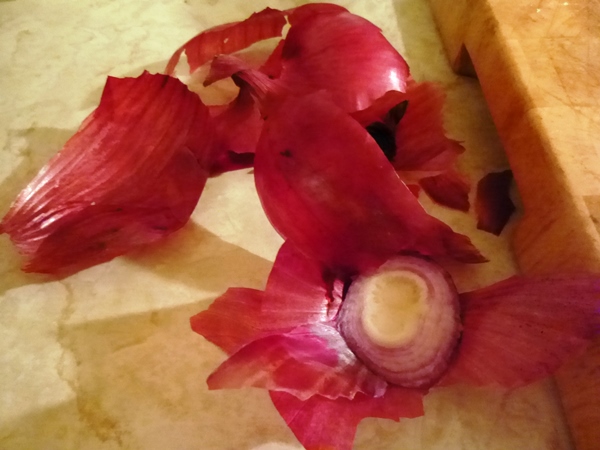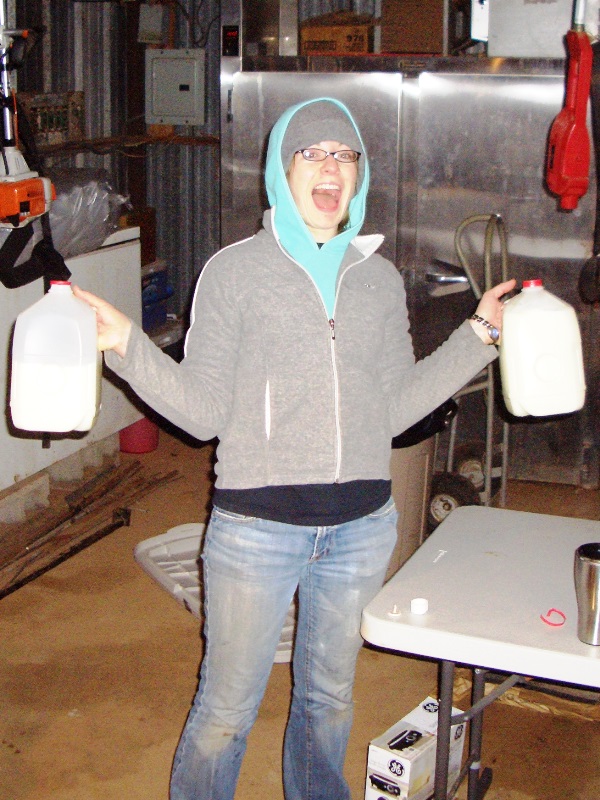New Pork Pricing
We started this ranch from nothing a short 6 years ago. It’s been an intense, never-die experience that is harder than we ever imagined. It may not seem like it, but we are still tiny in terms of farm sizes, producing only a few tens-of-thousands of pounds of meat per year compared to the millions of pounds produced by a single feedlot or confinement location. Translation: One customer makes a much bigger difference to us than to the Big Guys. Your one little purchase is really significant when made with a small-time farm like ours. You see, the odds are definitely stacked against small farmers, with laws and economies of scale and the convenience of supermarket shopping always falling in favor of corporate farms. That’s why there are so few farms like ours.
But we are hard-headed. And we love what we do. And we realize that if we don’t do it, who will? This is a TOUGH way to earn a living! But we need this kind of food. You need this kind of food. Our nation is sick because of the poor quality of its food. Our country is well-fed, but it is under-nourished. Food production practices matter, and people are beginning to realize that, but they don’t always know where to turn to find really-natural food.
Great news!
God has blessed our work and we have been able to grow rapidly in this 6 years. We started with 9 little pigs, about 15 cows, 12 laying hens, 50 broilers, and 4 turkeys. Now we have over 200 pigs, 100 cows, 500 laying hens, and we produce 7,000 broilers and 60 turkeys annually, with plans to continue adding more numbers and more species in the very near future. We’ve been blessed to increase in number and in knowledge, and we are ready to pass that blessing back to you in the form of lower prices. But there’s a catch…
Sustainable farming is just as much about sustainable growing practices as it is about sustainable profitability. We’re not out to get rich, and for those of you who have met us in person, we hope you know that. We work hard and live simply. We have tremendous family support and we love being able to work as stewards of the earth. We have steadily increased the efficiency of our infrastructure so that we can produce more delicious, nutritious food for you and for us.
We are ready to reduce our prices significantly, and to keep our prices at this new lower level, we must see a boost in overall sales. Two key factors in our ability to do that are:
- Encouraging our customers (that’s you!) to increase the amount of Shady Grove Ranch products you consume; and
- Increasing our customer base to reach new people.
So how do we increase sales in this tough economy?
As I said, we’re a very small company. We have roughly 400 actively buying customers. That’s tiny! We have just under 2000 email subscribers, and even more Facebook page followers, which is still tiny compared to the populations we serve. So I know we haven’t reached our full potential. Many people are still unaware of the problems with so-called “natural” labels at the grocery store. Even more than that, there are plenty of folks out there that don’t even realize they CAN buy directly from a farm right here in East Texas!
A lot of people think the cheaper products they find at Big Box stores are “good enough.” Please remember when you see labels at the store that make natural claims about meats and eggs, you must educate yourself. We meet people daily that still think that “Free Range” or “Organic” or “Cage-Free” or even “Grass-fed” resembles what we do here at Shady Grove Ranch. The fact is that all of those labels are so far below our standards in terms of soil and land management, pasture access for livestock, exclusion of genetically-modified products, rampant antibiotic use, estrogen dosing, feeding grain to the cows (yep, even that’s allowed under the “Grass-fed” and “Organic” label), unlisted chemical additives, and the list goes on.
It is so disheartening to hear that people still think that stuff is even in the same ballpark as our products. It’s not! There are all sorts of loopholes and vague definitions. Consumers have been duped! It’s time to Know Your Farmer. We encourage you to visit us, shake our hands, ask your questions, and support the people that you know are growing your food the way you want for your family.
How You Can Help
We can feed you for less if you will each tell a few friends about us, and perhaps commit to spending $10 or $20 more per month either by purchasing directly from us through one of our local pickup options, or by purchasing at a store in your area that carries our products. Tell the manager there that you love our stuff and want to see more variety on the shelf (none of our stores carries everything!). Hang in there with us as we continue to expand and improve our variety–that means choose from what’s in stock, even if it means changing up the meal plan a little.
We’re going to try out some substantially reduced pork prices in the month of October–can you recruit friends and family to start buying from us? Can you increase your own buying, even just a little? We’re trying to launch this big ship of best-and-most-affordable-meat-
Exciting Changes!
We’ve officially launched our lowest pork prices ever to see how things go. If we can boost our overall sales significantly, we can keep the new price structure and move on to working to reduce prices on other species. Keep in mind that our price cuts aren’t because the integrity of our products is less–it’s because inch by inch over the years, we have improved our efficiency and are finally rising over the hump of start-up expenses, particularly in pork. We expect chicken to be right behind it, and then hopefully eggs and beef. (Beef takes the longest because cows grow the slowest!) To keep the momentum going, we need more eaters! Can you help?
Here’s the plan: Starting now, specialty items like sausage links, smoked hams, and lower-volume cuts like tenderloin, bacon, and center cut loin will be $8.50/lb. The rest of the large-volume cuts, like breakfast sausage and shoulder roast, will be $6.50/lb. Easy, huh? We’ll reevaluate at the end of October to see if we’ve made enough new sales to keep it up. All you have to do is eat more good food and tell your friends to do the same. 😉
Action Time
We want to and can feed more people, and we’re excited about where we’re headed. Here are some practical ways you can sustain these great new prices:
- Place an order! We’ve got a fresh round of deliveries coming up this month in Tyler, Shreveport, Longview, and Marshall. Or you can pick up at the ranch in Jefferson any time by appointment.
- Jump over to Facebook to share this post and tell folks why you love our products. In the age of buy-by-reviews, this helps us tremendously! We’ve even started a giveaway!
- Forward our email newsletter to friends, coworkers, etc.
- Commit to adding Shady Grove Ranch products to one more meal each week. Your guts will thank you, and so will we!



